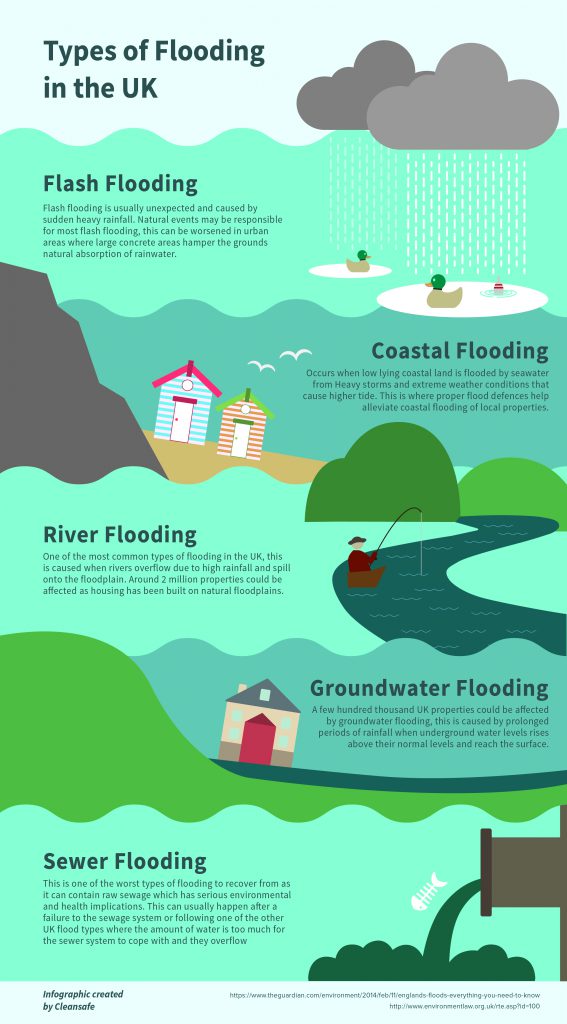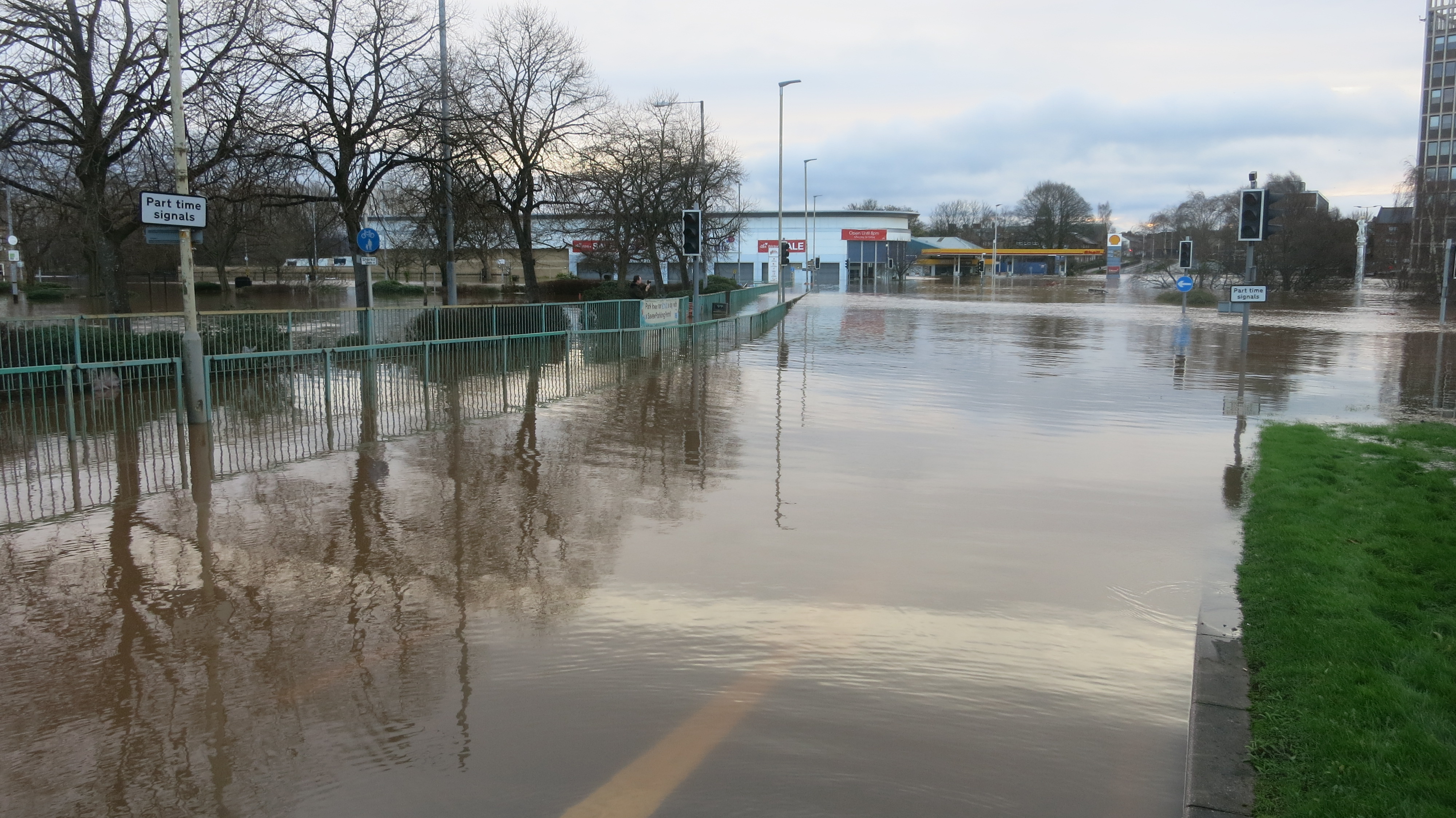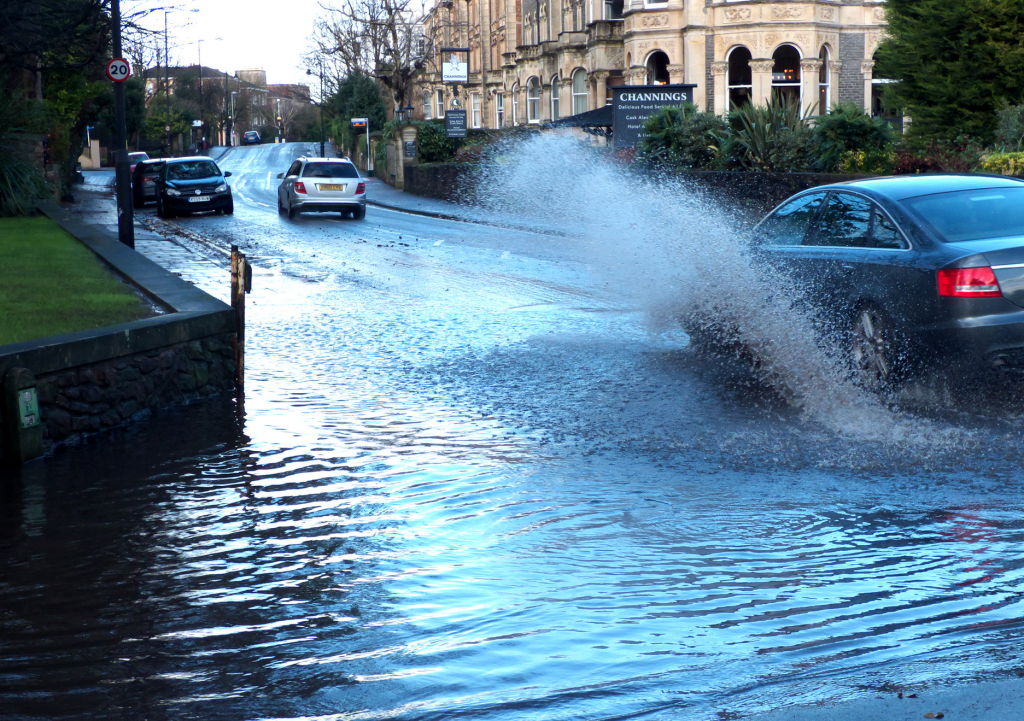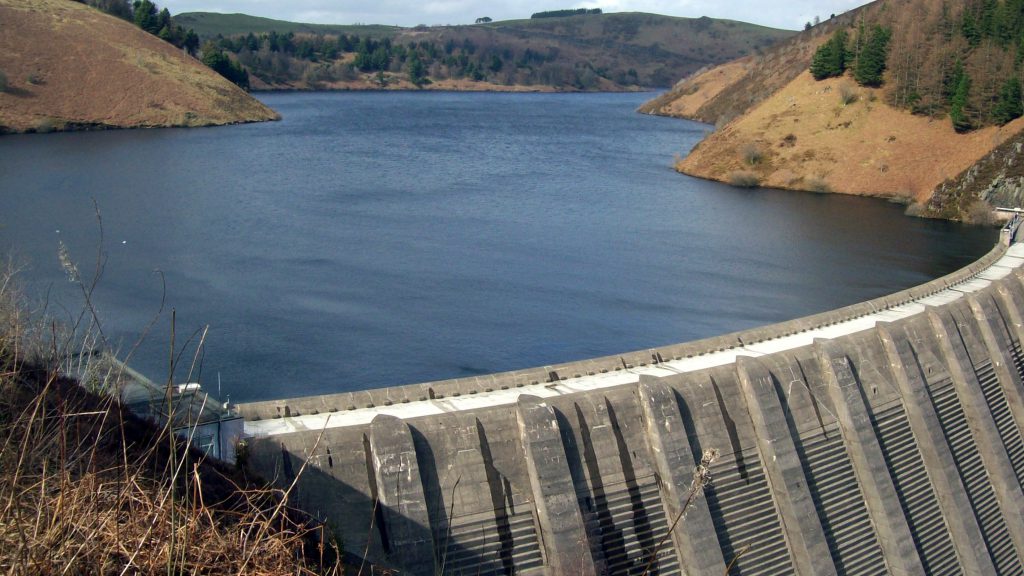Types of flooding
In the UK currently, about 1 in 6 homes is at risk of flooding. This could be from a range of sources, and even if a property has never flooded in the past, this does not mean that it is not at risk. In addition to this, in order for a property to flood, it does not need to be located near a river or the sea, or even in low-lying areas. Flooding affects properties all over the UK and in very different ways, with climate change altering weather patterns for the future, it is expected that more areas of the UK could become at risk of flooding. It is essential that you as a homeowner or business owner understand the main types of flooding and what you can do to reduce the damage caused by flooding.
The UK is affected by six main types of flooding:
River flooding
Coastal flooding
Surface water flooding
Groundwater flooding
Sewer flooding
Reservoir flooding
To find out how you can check to see if you are at risk of flooding, please click here. This will provide flood maps for all areas of the UK which highlight a range of flooding types.
You can also find out more about the different types of flood protection measures you can put in place on your home or business in the “what is resilience” section of our site.
The infographic below can further outline some of these types of flooding:
The infographic highlights the different types of flood that can impact the United Kingdom. It is essential to not only find out if your business or home is at risk of flooding, (which you can do this through our site here), but understand how this type of flooding may impact you.
Understanding the 6 main types of flooding in the UK will allow you and local authorities to set up the correct flood protection methods. The impact of flooding is very high in the UK, which highlights the importance of understanding the type of flood and flood risk in your area. The infographic gives an overview of each different type of flood, for further information please see the what is resilience pages of our site.
River flooding
River flooding, or fluvial flooding, is a very common type of flooding in the UK. This is where a river’s flow will exceed the bank sides and cause damage or obstruction to a nearby area. Homes and businesses located near streams and rivers should always check their flood risk, to see if they should be worried about river flooding.
River flooding is often fast flowing due to currents from the river itself, if you are walking or driving near a flooded river be very careful and never drive or walk through flowing floodwater. Obstacles may also be carried by river currents, which can even include cars. Just 30cm of fast flowing floodwater can move a car.
Coastal flooding
Coastal flooding is a type of flooding that affects communities situated close to the sea. With high tides, stormy weather, and climate change all contributing to an increased risk of coastal flooding, this is a major hazard for many areas of the UK. Seawater over topping coastal defences can cause significant damage and disruption to communities, often requiring retreat further inland. With the added problem of salt in the seawater damaging buildings, coastal flooding is a serious issue and should be addressed with appropriate flood protection.
Surface water flooding
Surface water (also known as pluvial) flooding can affect people all around the country. Even if you are not situated near to a rive or the sea, you may still be at risk of this type of flooding. Surface water flooding occurs after periods of heavy rainfall where excess water cannot drain away. This may be due to a range of reasons including blocked drains or even rainwater running off roads. This water will then collect in an area it cannot drain away from and can cause serious damage. Surface water flood maps are currently available in the UK, but as areas change and develop, this may change where water could collect. Just because your home or business has not flooded before, does not mean that it may not flood in the future.
Groundwater flooding
Groundwater flooding can affect homes and businesses in the UK although this is not the most common type of flooding. For groundwater flooding to occur, the water table in an area must rise as a result of increased rain. When this water table rises up through a slope, there may be a point at which the water table is above the ground level. If this happens, the water will flow over the surface as it cannot seep into the ground – this is groundwater flooding. Unlike other types of flooding, groundwater flooding may require you to consider measures to protect your home that will prevent water from rising up from below your building – such as a floor membrane.
Sewer flooding
Sewage flooding rarely affects homes and gardens in the United Kingdom. Sewage flooding however is extremely unpleasant and can be a dangerous type of flood in the UK due to the high levels of bacteria that can spread. The risk of sewage flooding is low in the UK due to both private companys, and local councils putting flood prevention systems in place.
The most common cause of sewage flooding is a blockage in the sewage pipe. It is crucial if you notice sewage flooding, to contact your council and a professional clean-up company should be organised to ensure minimal health risks occur.
Reservoir flooding
Reservoir flooding is extremely rare in the UK due to very strict regulations and mandatory assessments. However, it is still essential to be aware of your risk of reservoir flooding. Reservoir flooding will cause very fast flowing water to flow down the natural water path in large quantities. Get to high ground as quickly as possible.
Reservoir maps are now available for England and Wales, click here for more details. Full details for reservoir owners and operator requirements is available here.
Image attributions
Types of flooding infographic courtesy of CleanSafe
IMGP1346 by Matt Buck | CC BY-SA 2.0
Porthcawl – Sunrise @ High Tide by Gareth Thompson | CC BY 2.0
Carlisle Floods 2015 by John Campbell | CCO 1.0
Groundwater flooding diagram courtesy of Southern Water
Blocked Gulleys and A Bit Of Rain by Sam Saunders | CC BY-SA 2.0
LLYN CLYWEDOG DAM AND RESERVOIR by Freddie Phillips | CC BY 2.0







